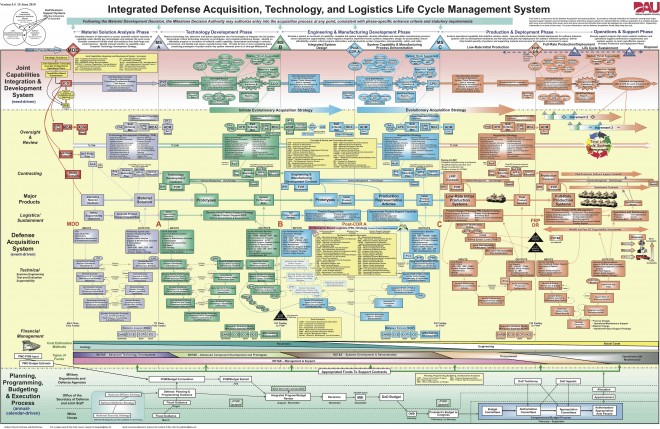I couldn’t help but chuckle as I followed the saga of “petroleum products” in the Shaw and Logan Circle areas of DC over the past few days. Those of you who have lived on a Navy ship (especially carriers) know exactly what I mean. Who among us hasn’t turned on the shower and basked in the smell of JP5 (Jet fuel used by Navy aircraft……basically expensive kerosene)? Heck, there was always a hint of kerosene in the water. This is the principal reason that internal parasites are not a problem for Sailors……the hint of kerosene eliminates them. (When I was a young lad growing up in the backwoods of Alabama, the standard remedy for worms was a teaspoon of kerosene. Check out the link) I’m sure there are a variety of other benefits, but I’m too lazy to look them up. Back to the JP5 laced water.  We didn’t complain because we were glad to have water. By the way, for you youngsters, there was no such thing as bottled water back then. In the days before the all nuclear carrier fleet, ships were all too frequently put on “water hours” to conserve fresh water. Priority of water usage was First to the boilers, second to food, third to washing airplanes and finally to the crew for showers. The way in which ships made fresh water back then was by distilling fresh water from seawater using the “Flash Evaporators.” Even graduate engineering students had a hard time figuring out how those things worked ( and frequently they didn’t….hence “water hours”). In fact, Chief Engineers would mortgage their souls for an individual who knew how to make the damned things work…They were usually some salty petty officer who had done nothing all his life but coddle and coax fresh water out of the mysterious machines. These guys were the original “Scottie”, capable of performing all sorts of miracles with baling wire and silly putty . We were always told that JP5 was in the water because during flight operations the carrier tended to stay in the same general area seeking the wind, and consequently we would crisscross the wake and suck up all the flotsam, jetsam, sewage, dumped fuel and who knows what else. It was also rumored that salt peter was put in the water (I’ll let you figure out why).
We didn’t complain because we were glad to have water. By the way, for you youngsters, there was no such thing as bottled water back then. In the days before the all nuclear carrier fleet, ships were all too frequently put on “water hours” to conserve fresh water. Priority of water usage was First to the boilers, second to food, third to washing airplanes and finally to the crew for showers. The way in which ships made fresh water back then was by distilling fresh water from seawater using the “Flash Evaporators.” Even graduate engineering students had a hard time figuring out how those things worked ( and frequently they didn’t….hence “water hours”). In fact, Chief Engineers would mortgage their souls for an individual who knew how to make the damned things work…They were usually some salty petty officer who had done nothing all his life but coddle and coax fresh water out of the mysterious machines. These guys were the original “Scottie”, capable of performing all sorts of miracles with baling wire and silly putty . We were always told that JP5 was in the water because during flight operations the carrier tended to stay in the same general area seeking the wind, and consequently we would crisscross the wake and suck up all the flotsam, jetsam, sewage, dumped fuel and who knows what else. It was also rumored that salt peter was put in the water (I’ll let you figure out why).
Other related issues also come to mind…Navy Showers. Because water was scarce, one was required to take a Navy shower. Here’s how to take a Navy Shower:
- Find shower with hot water
- Alternatively find shower with any water
- Dampen body with greasy water
- Soap up all your parts
- If water still available, rinse. Otherwise search for shower with water (preferably hot)
- Wipe soapy residue from body with towel
 The alternative to a Navy shower was a “Hollywood” shower…..In order to luxuriate in a Hollywood shower, one had to do some prior planning and smuggle a regular shower head onboard. Showers normally had a handheld jobber with a button one pressed to unleash a fine water mist. These didn’t work too well because often there wasn’t enough water pressure to make the blasted things work. Anyway, in order to enjoy a true Hollywood shower, one would remove the standard issue shower head and replace with the regular shower head, and assuming there was water, you could splash away…..At least until the Master at Arms (also know as the XO spies) caught you. On one ship I was on, if the Master at Arms caught you taking a Hollywood shower, you had to carry around a rubber duck until you caught someone else taking a Hollywood….which you could then transfer to the most recent offender. I not too sure that the Navy still polices the showers, so this is probably not a problem now….In fact with unlimited amounts of nuclear power, reverse osmosis water plants and the like, I’m guessing water isn’t that much of a problem any more….
The alternative to a Navy shower was a “Hollywood” shower…..In order to luxuriate in a Hollywood shower, one had to do some prior planning and smuggle a regular shower head onboard. Showers normally had a handheld jobber with a button one pressed to unleash a fine water mist. These didn’t work too well because often there wasn’t enough water pressure to make the blasted things work. Anyway, in order to enjoy a true Hollywood shower, one would remove the standard issue shower head and replace with the regular shower head, and assuming there was water, you could splash away…..At least until the Master at Arms (also know as the XO spies) caught you. On one ship I was on, if the Master at Arms caught you taking a Hollywood shower, you had to carry around a rubber duck until you caught someone else taking a Hollywood….which you could then transfer to the most recent offender. I not too sure that the Navy still polices the showers, so this is probably not a problem now….In fact with unlimited amounts of nuclear power, reverse osmosis water plants and the like, I’m guessing water isn’t that much of a problem any more….
Enough of that. Maybe on another slow news day I’ll write about more quirks of my past Navy life.
Anyway, here’s wishing you all the happiest of Holiday Seasons and a prosperous New Year.
Lou





 It’s the world where everything is backwards….the name of the bizarro world planet is Htrae (so clever!) and the world is square. As I recall, it was featured occasionally in Superman comics in the 1960’s. One of the mottos in Bizarro World was ” Us do opposite of all earthly things.” Bizarro bonds were a hot item on Htrae because they were “guaranteed to lose money.” So I don’t think it’s a huge stretch to make the analogy here.
It’s the world where everything is backwards….the name of the bizarro world planet is Htrae (so clever!) and the world is square. As I recall, it was featured occasionally in Superman comics in the 1960’s. One of the mottos in Bizarro World was ” Us do opposite of all earthly things.” Bizarro bonds were a hot item on Htrae because they were “guaranteed to lose money.” So I don’t think it’s a huge stretch to make the analogy here. A few days after the decision was made, the staff came back and noted that since we slid the ship a year, it’s going to cost more…..I don’t remember how much, but it was around $100 Million or so. “Really?” I commented. ‘Oh, yes,” came the reply, ” money will cost more the next year, we have shipyard loading issues that we will have to pay for, the cost of steel is going up, blah, blah blah.” So I began to understand that the economics of shipbuilding were different. I formulated The Shipbuilding Entropy Rule: “Nothing ever costs less. NO matter what you do, it will always cost more.” You buy less, they cost more. You cancel the buy, you still have to pay the overhead. You remove capability, it costs more to redo drawings. Its all very counter-intuitive. This became very clear to me during the following year’s budget build when the staff came back and said “We made a mistake. We have to move the LMSR back to the original purchase year.” “Fine,” I replied, “No harm, no foul.” Sensing it wasn’t “Fine“, based on the furtive glances between the staffers (an admiral sees a lot of those looks in the Pentagon) I asked “What’s wrong?” Turns out, if we moved the ship back into the original purchase year, it added another $100 Million to the cost! Whadakknow? We essentially did nothing and paid $200 Million not to do it! That, my friends, is Bizarro accounting!
A few days after the decision was made, the staff came back and noted that since we slid the ship a year, it’s going to cost more…..I don’t remember how much, but it was around $100 Million or so. “Really?” I commented. ‘Oh, yes,” came the reply, ” money will cost more the next year, we have shipyard loading issues that we will have to pay for, the cost of steel is going up, blah, blah blah.” So I began to understand that the economics of shipbuilding were different. I formulated The Shipbuilding Entropy Rule: “Nothing ever costs less. NO matter what you do, it will always cost more.” You buy less, they cost more. You cancel the buy, you still have to pay the overhead. You remove capability, it costs more to redo drawings. Its all very counter-intuitive. This became very clear to me during the following year’s budget build when the staff came back and said “We made a mistake. We have to move the LMSR back to the original purchase year.” “Fine,” I replied, “No harm, no foul.” Sensing it wasn’t “Fine“, based on the furtive glances between the staffers (an admiral sees a lot of those looks in the Pentagon) I asked “What’s wrong?” Turns out, if we moved the ship back into the original purchase year, it added another $100 Million to the cost! Whadakknow? We essentially did nothing and paid $200 Million not to do it! That, my friends, is Bizarro accounting! They became so expensive and the requirements bounced around so much, we began advertising it as a fire support ship vital to the survival of the Marines during amphibious assaults. As such, we only needed about 10-12, just enough to support the number of amphibious ready groups (ARGS) we had at the time. The Marines were happy about that, even though they preferred to have 2 per ARG. I even went over to the Hill with my Marine counterpart extolling the virtues of the DDG-21 as the perfect fire support ship for the Marines. But once the Marines realized that the cost of the ship was so high that it would probably limit the amount of other stuff they could buy, they dropped it like a hot potato…..they would much rather have the 360 V-22’s than 24 DD(X)’s. So in the space of about a month we changed our tune from”vital” to “not so vital.” Now that they are $3 Billion a copy, we are only building 3 of them and I’m not sure there’s a real requirement out there. As my Grandmother said when she got her first taste of champagne in one of those dinky champagne flutes at my son’s baptism, “That’s not enough to wet my whistle.” So it is with DDG-1000 IMHO. The real requirement as far as I can tell is to have something for Bath Iron Works to build ( they will build all three) so they can stay in business in order to address industrial base concerns. Hence the title of the article.
They became so expensive and the requirements bounced around so much, we began advertising it as a fire support ship vital to the survival of the Marines during amphibious assaults. As such, we only needed about 10-12, just enough to support the number of amphibious ready groups (ARGS) we had at the time. The Marines were happy about that, even though they preferred to have 2 per ARG. I even went over to the Hill with my Marine counterpart extolling the virtues of the DDG-21 as the perfect fire support ship for the Marines. But once the Marines realized that the cost of the ship was so high that it would probably limit the amount of other stuff they could buy, they dropped it like a hot potato…..they would much rather have the 360 V-22’s than 24 DD(X)’s. So in the space of about a month we changed our tune from”vital” to “not so vital.” Now that they are $3 Billion a copy, we are only building 3 of them and I’m not sure there’s a real requirement out there. As my Grandmother said when she got her first taste of champagne in one of those dinky champagne flutes at my son’s baptism, “That’s not enough to wet my whistle.” So it is with DDG-1000 IMHO. The real requirement as far as I can tell is to have something for Bath Iron Works to build ( they will build all three) so they can stay in business in order to address industrial base concerns. Hence the title of the article. regarding the relief of 16 Air Force officers
regarding the relief of 16 Air Force officers Back to the nuke thing. One thing I knew as an Attack Squadron Commanding Officer: The quickest way to be relieved without question was to score anything other than an outstanding on nuke inspections. Consequently, I put my absolute best officers and enlisted personnel in those positions. I assume the same is true in the Air Force, so that the absolute best must be assigned nuclear positions. In that business, there is no room for error. Obviously some house cleaning was needed and the Air Force leadership did what they had to do.
Back to the nuke thing. One thing I knew as an Attack Squadron Commanding Officer: The quickest way to be relieved without question was to score anything other than an outstanding on nuke inspections. Consequently, I put my absolute best officers and enlisted personnel in those positions. I assume the same is true in the Air Force, so that the absolute best must be assigned nuclear positions. In that business, there is no room for error. Obviously some house cleaning was needed and the Air Force leadership did what they had to do. Second was the publishing of a report by the Senate Permanent Subcommittee on Investigations, Chaired by Senator Levin, with Senator McCain as the Ranking Member. The report, entitled “
Second was the publishing of a report by the Senate Permanent Subcommittee on Investigations, Chaired by Senator Levin, with Senator McCain as the Ranking Member. The report, entitled “

 In just a few days, all the big accounting firms that do business with DoD will be submitting proposals to conduct audits of the the Army, Navy and Air Force Statements of Budgetary Activity (SBA)……that’s a high level balance sheet that has little applicability to the actual management of anything. Experience in auditing the Marine Corps proved that trying to do anything else was futile. One just has to read the Reuters article on “Plugs” to see just how daunting a task auditing any of the services really is. Inventing phantom ledger entries or “plugs” to explain away imbalances in the “goes-intas” and the “goes-outtas” is apparently the norm at the Defense Finance and Accounting Service. What’s a little disturbing about this whole audit thing, is that many of these sins will go unexamined because they do not necessarily impact the SBA. See my article “
In just a few days, all the big accounting firms that do business with DoD will be submitting proposals to conduct audits of the the Army, Navy and Air Force Statements of Budgetary Activity (SBA)……that’s a high level balance sheet that has little applicability to the actual management of anything. Experience in auditing the Marine Corps proved that trying to do anything else was futile. One just has to read the Reuters article on “Plugs” to see just how daunting a task auditing any of the services really is. Inventing phantom ledger entries or “plugs” to explain away imbalances in the “goes-intas” and the “goes-outtas” is apparently the norm at the Defense Finance and Accounting Service. What’s a little disturbing about this whole audit thing, is that many of these sins will go unexamined because they do not necessarily impact the SBA. See my article “ Stay tuned, but I think with sequestration about to raise its head once again, the President under pressure to mount military responses to multiple spots around the globe, and political stalemate in the Congress, betting on continued funding for DoD audits is at best like wagering on red or black at the roulette wheel at Trump Towers in Atlantic City (ooppppsss, it’s out of business, so how about The Nugget in Las Vegas?).
Stay tuned, but I think with sequestration about to raise its head once again, the President under pressure to mount military responses to multiple spots around the globe, and political stalemate in the Congress, betting on continued funding for DoD audits is at best like wagering on red or black at the roulette wheel at Trump Towers in Atlantic City (ooppppsss, it’s out of business, so how about The Nugget in Las Vegas?). I’m not surprised at that because given the irrational focus of DoD on vendor profits, they have managed to make bidding on defense contracts so unattractive that fewer and fewer companies are making the effort to bid. In my view, it’s not just one reason:
I’m not surprised at that because given the irrational focus of DoD on vendor profits, they have managed to make bidding on defense contracts so unattractive that fewer and fewer companies are making the effort to bid. In my view, it’s not just one reason:

 a good topic for you small business owners to consider because the Small Business Administration cites unexpected growth as a major reason for small business failure. This is something that CCA has focused on as we developed our market strategy. Take a look at some of my thought on “
a good topic for you small business owners to consider because the Small Business Administration cites unexpected growth as a major reason for small business failure. This is something that CCA has focused on as we developed our market strategy. Take a look at some of my thought on “ It also took some sophistication because we discovered that more power was not the answer in breaking the sound barrier. Turns out something called the
It also took some sophistication because we discovered that more power was not the answer in breaking the sound barrier. Turns out something called the  that’s my pitch for the day. Think about your business in aviation terms and anticipate the risks that are out there just waiting for you. They can be predicted, avoided or dealt with. But only if you go in with eyes open and scanning on the horizon. As the proud owner of a successful small business about to become large, your scan needs to move to the horizon of your business not right in front of your nose. If you aren’t scanning the horizon then you are a candidate for failure.
that’s my pitch for the day. Think about your business in aviation terms and anticipate the risks that are out there just waiting for you. They can be predicted, avoided or dealt with. But only if you go in with eyes open and scanning on the horizon. As the proud owner of a successful small business about to become large, your scan needs to move to the horizon of your business not right in front of your nose. If you aren’t scanning the horizon then you are a candidate for failure.